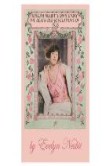By Evelyn Nesbit
Main Street Press, 14.99,
“Evelyn Nesbit’s own story” and her telling of it exhibit a courageous and “dive-in” attitude toward life, especially toward what she would have called her “knocks.” The Deathbed Revelations of 1926 were originally published serially in Variety magazine, written by Evelyn on commission. Though the articles were written in the months after her third suicide attempt, and since Evelyn went on to live many years after that, the material is not exactly what the phrase “deathbed” connotes. This is never explicitly part of the organization of the material, but gleaned from browsing the dated pictures and news stories included.
The book opens with a 30-page preface of period newspaper stories reporting the suicide attempt and rehashing Evelyn’s past; this reviewer suggests reading the first two, but if your interest wanes or wearies at the extreme sensationalism, begin reading the Chapters. Truly, Evelyn’s own voice is riveting.
In her story, she describes, and moreover, observes, her treatment by Stanford White and Harry Thaw showing her success as a memoirist – and how men can regard successful women as dangerous. Her first installment (now, Chapter 1) poses the questions she knows will grab her readers’ attention – readers already familiar with “the most notorious woman in the world”: “Why did Harry Thaw kill Stanford White? Was I the only cause?” She promises answers with simple yet suspenseful framing.
“It would have been a far braver, far more righteous thing, if I had left my secrets dead in the cemetery of my heart.”
Her matter-of-fact social commentary (Chapter VI confronts the reader with “the double standard”) is the best part of the book, and her humanizing philosophy in these chapters is pertinent as ever. Reading an autobiography, the story of an “I”, is so welcoming precisely because one becomes absorbed into a different real perspective on life without being forced into a debate or change. Of course, the author may walk on the edge of debate, as in Nesbit’s case, where her words can contest other words written about her. This is underlined in reading the reported stories, though most of those stories would have been easier digested in an appendix.
The genre of memoir or “revelations” has exploded since 1926, and while reading I thought Nesbit could certainly have filled a larger tome with more detail and done well with today’s public, too, and after finishing the book I learned she published a book memoir in 1934. The Deathbed Revelations of 1926 has value in Evelyn’s chapters themselves, its brevity and focus on pieces perhaps not collected elsewhere….but an editor’s note giving the big picture and explaining why the supplemental pieces were chosen was sorely missed.
Much more than a PR bid, Evelyn’s articles were not only the means to support herself during that difficult time, but the proof she had done so before and could do so again, having reached out to death but staging a comeback after all.
Reviewed By Sarah Alibabaie
[amazon asin=0988455447&text=Buy On Amazon]
[amazon asin=0988455447&text=Buy On Amazon&template=carousel]

